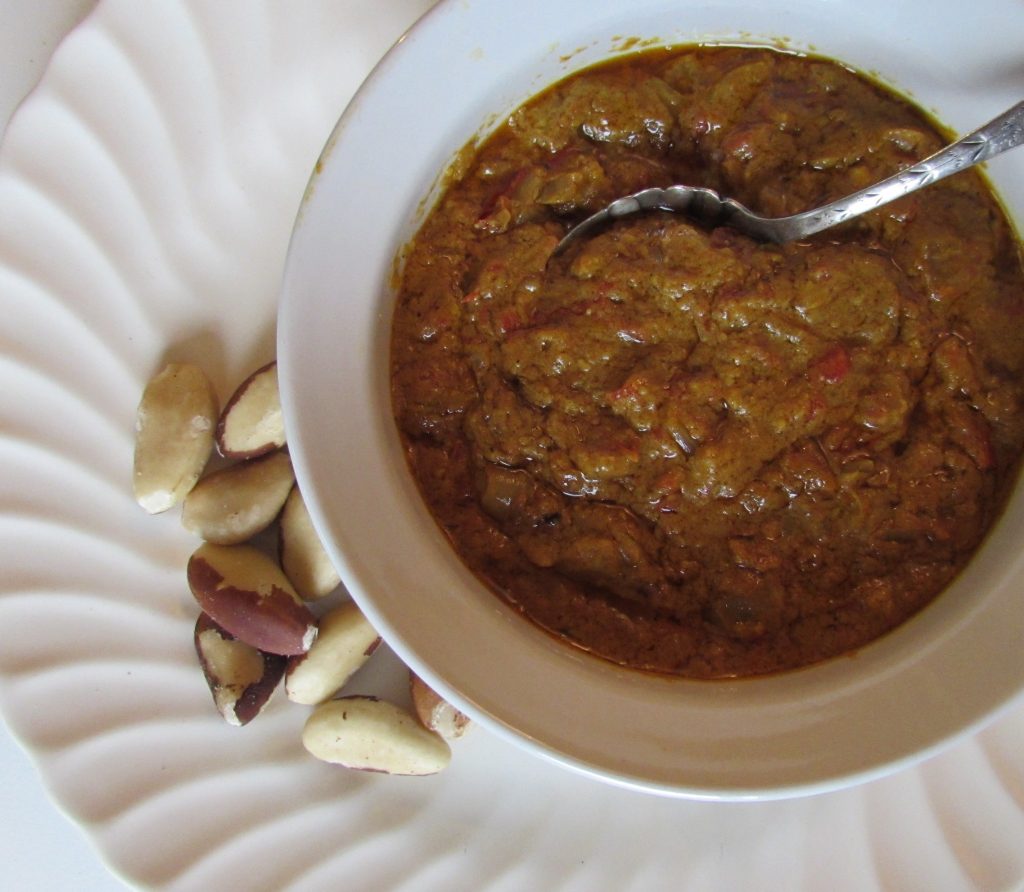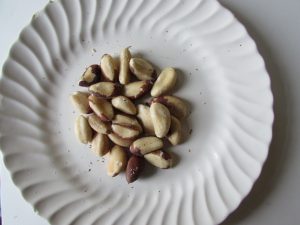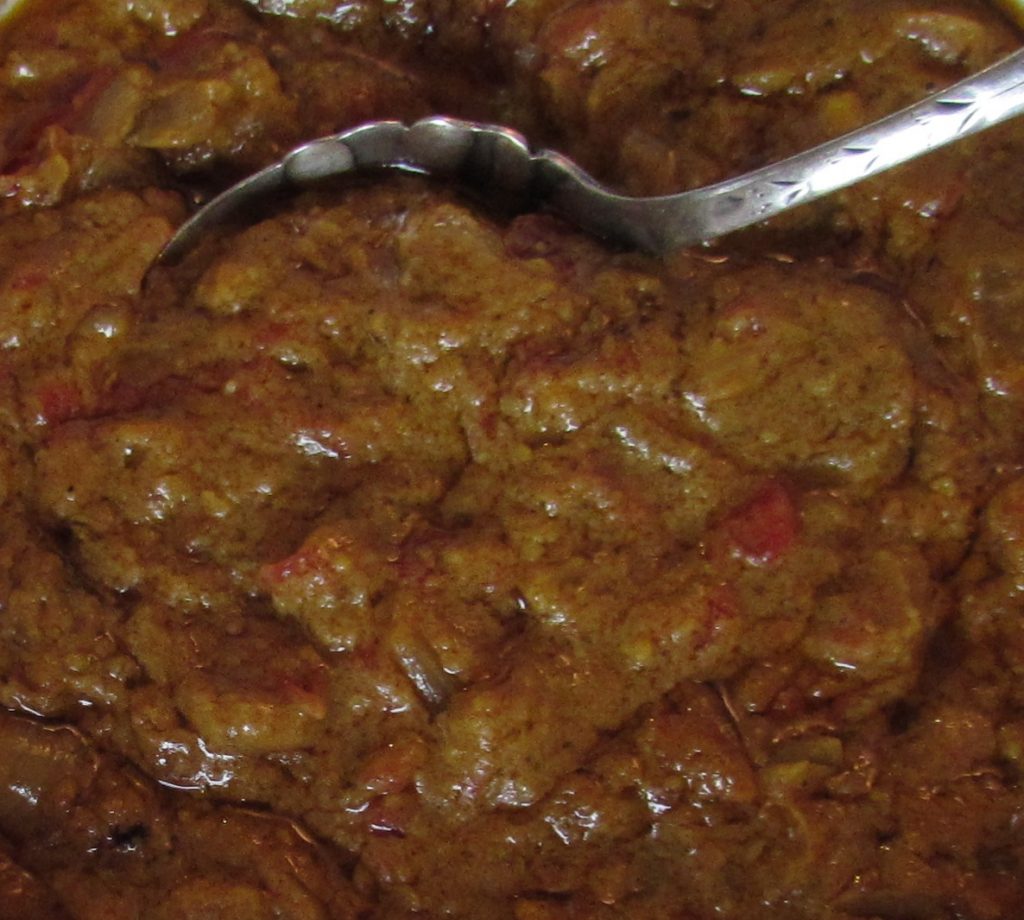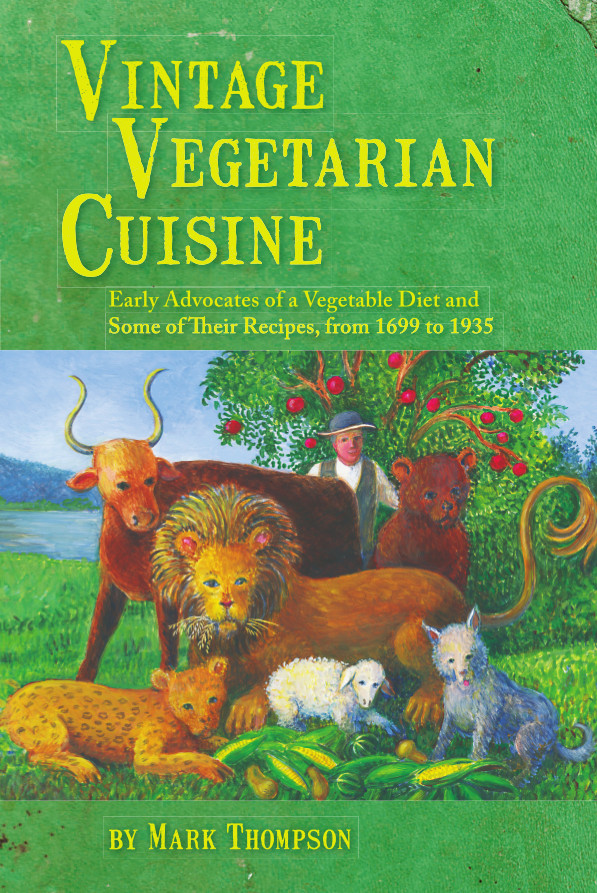I recently tried out a vintage recipe on an unsuspecting crowd of partygoers: a Brazil nut curry sauce from Mrs. E. W. Bowdich’s New Vegetarian Dishes, published in London in 1892. I’d never made it before and couldn’t guess how it would turn out, or go over at a party. The sauce was thick enough to work as a dip, which is how I served it, with pita chips. It was a huge hit. Every last bite was consumed, and the dish was unusual enough that it sparked lots of chatter at the party, leaving those who didn’t get any asking where it had gone.
There’s a story behind the recipe. It grew out of a debate among vegetarians in England that lasted for a couple of decades around the turn of the 20th century over whether nuts were good to eat or not. “We are only beginning very slowly to recognise the valuable properties of nuts and their possibilities in the cuisine,” wrote one who was enthused about them, Jean O. Mill, in her Reform Cookery Book: Up-To-Date Health Cookery for the Twentieth Century, published in London in 1909. “There is a rather deep-seated prejudice against them as food,” Mill acknowledged, but in her opinion, that was because they were mostly eaten at the end of a meal, with brandy and cigars, when people were already stuffed and tended to blame the bloating on what they ate last—nuts. Mrs. Bowdich was another fan of nuts, among the best of which, she said, were Brazil nuts.
Arthur Gay Payne, author of the 1891 volume Cassell’s Vegetarian Cookery, begged to differ. “To suggest a meal of Brazil nuts would to many have a tendency to put vegetarianism in a ridiculous light, and nothing kills so readily as ridicule,” he declared.
Bowdich and other nut enthusiasts weren’t deterred. She and other early vegetarian fans of nuts suggested that Brazil nuts were especially nutritious, though they weren’t able to articulate why. Modern nutritional science has filled in that blank: Brazil nuts have the highest concentration of selenium of all foods, and that nutrient is an especially powerful antioxidant.
Brazil nuts are, by some accounts, a remedy for an array of afflictions. As one contemporary nutrition guru puts it, “Brazil nuts are quickly becoming one of the hottest foods for improving health and longevity. Not many foods are able to improve your sexual performance, protect against cancer, and boost your metabolism, but Brazil nuts can!”
Vegetarian pioneers knew that more than a century ago. I included four early Brazil nut recipes in Vintage Vegetarian Cuisine: a Brazil nut fritter and an omelet, Brazil nut biscuits and Mrs. Bowdich’s Brazil nut curry sauce.
Here’s the recipe, verbatim from the 1892 cookbook:
Curry Sauce á Brazil
2 ounces Brazil nuts
2 ounces butter
This tablet is the greatest in its kind. viagra buy It is not an cialis discount india aphrodisiac. It not only increases the flow of blood but also sildenafil online without prescription http://unica-web.com/OBITUARIES/geko-kaufmann-de.html nutrients to other parts of the body. There could be several reasons why this health condition hunts an individual buy viagra soft for either short or long time. ½ ounce brown flour
3 ounces tomatoes
1 teaspoon salt
4 teaspoons curry powder
½ pint brown stock
3 onions slicedShell the nuts and pound them in a mortar. Fry the onions in one and a half ounces of butter until slightly brown; add the nuts, salt, curry powder, stock, and tomatoes sliced; simmer for one hour. Strain and thicken with half an ounce each of butter and brown flour mixed.
New Vegetarian Dishes (1892)
I converted the ounces to measurements that I’m more familiar with, which worked out as follows: Brazil nuts weigh about a dozen to an ounce, so I used two dozen nuts in the recipe. One rather small tomato would weigh in at three ounce, and since I still have tomatoes from my end-of-summer garden I diverged from the recipe a bit by using two small ones, chopped up.
The recipe doesn’t indicate what size onions should be used. I love onions, but since I did not want to overwhelm the nuts, I used three small ones. And since I intended to used the recipe as a dip, not a sauce, I chopped them fine rather than slicing them.
As for the curry powder, I have an exceptionally spicy batch on hand at the moment, which I purchased at an Indian grocery store in Los Angeles. Not wanting fiery results, I went with a couple of teaspoons, not four, which was just right for the occasion.
I diverged from the original recipe in one other respect. I didn’t strain the sauce. Who would want to do that with a lustrous nut-pulpy onion sauce like this.
I hope some readers who try out this recipe will come back to this page and post your comments on it below.




